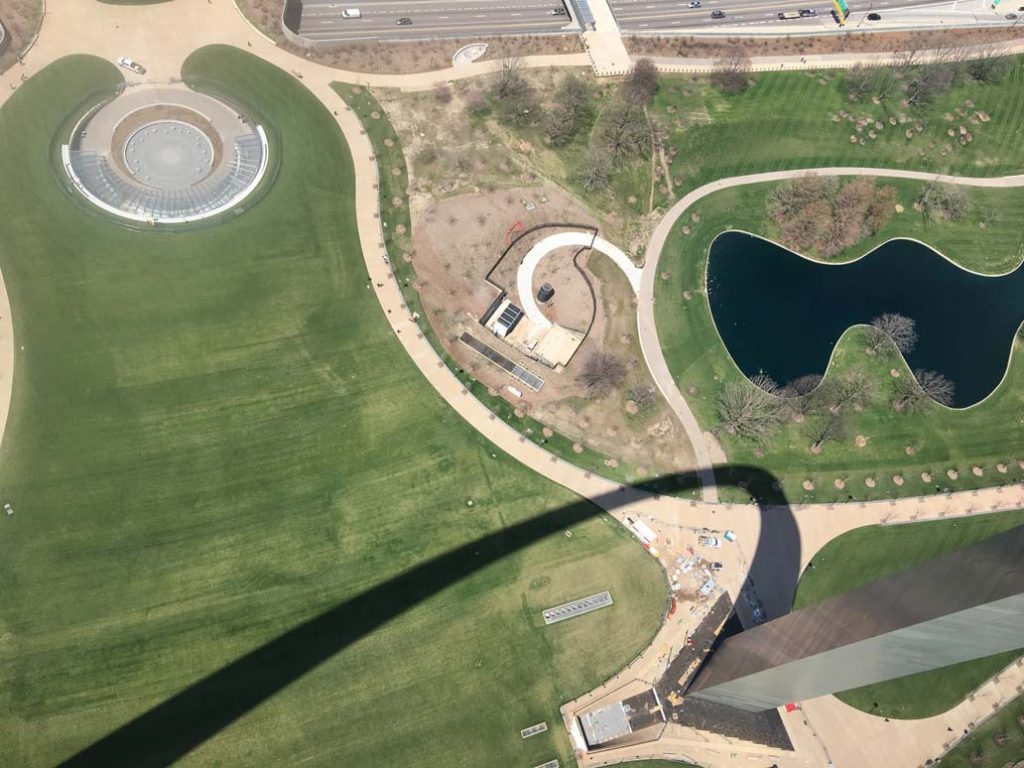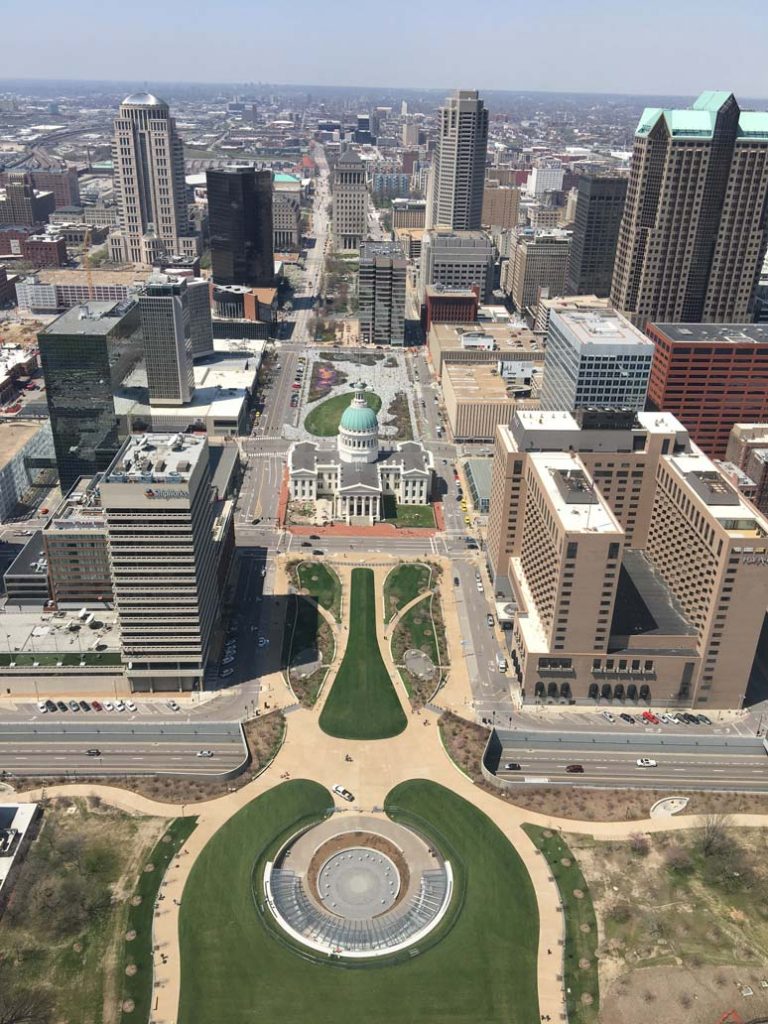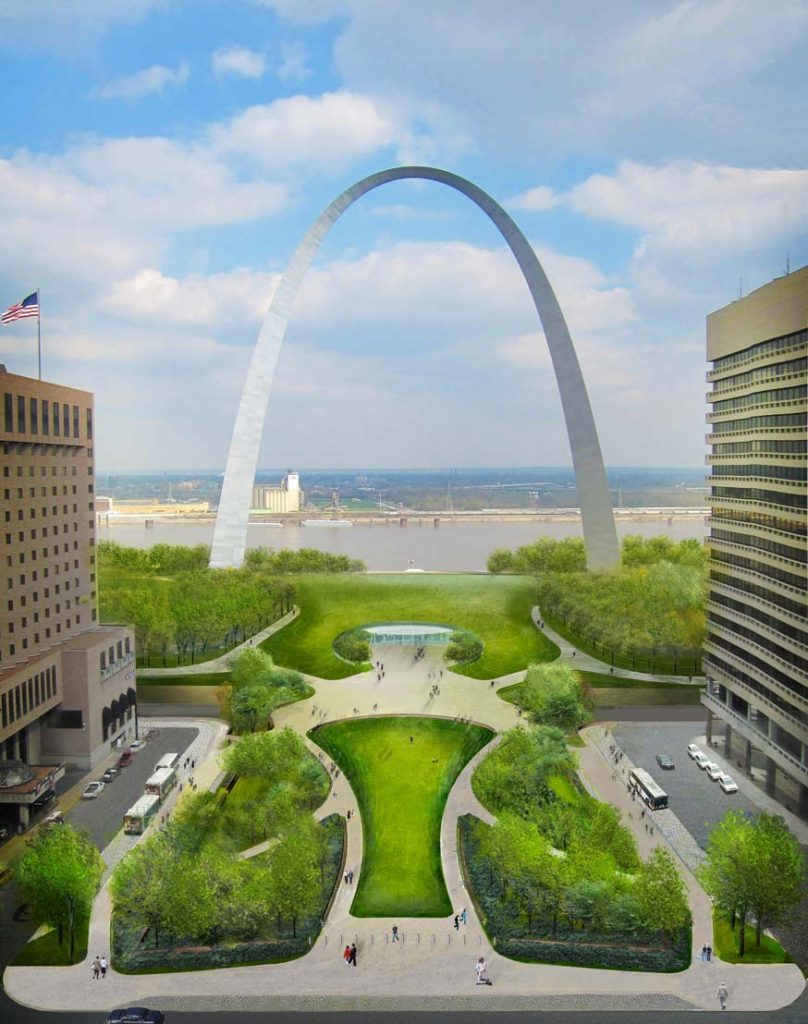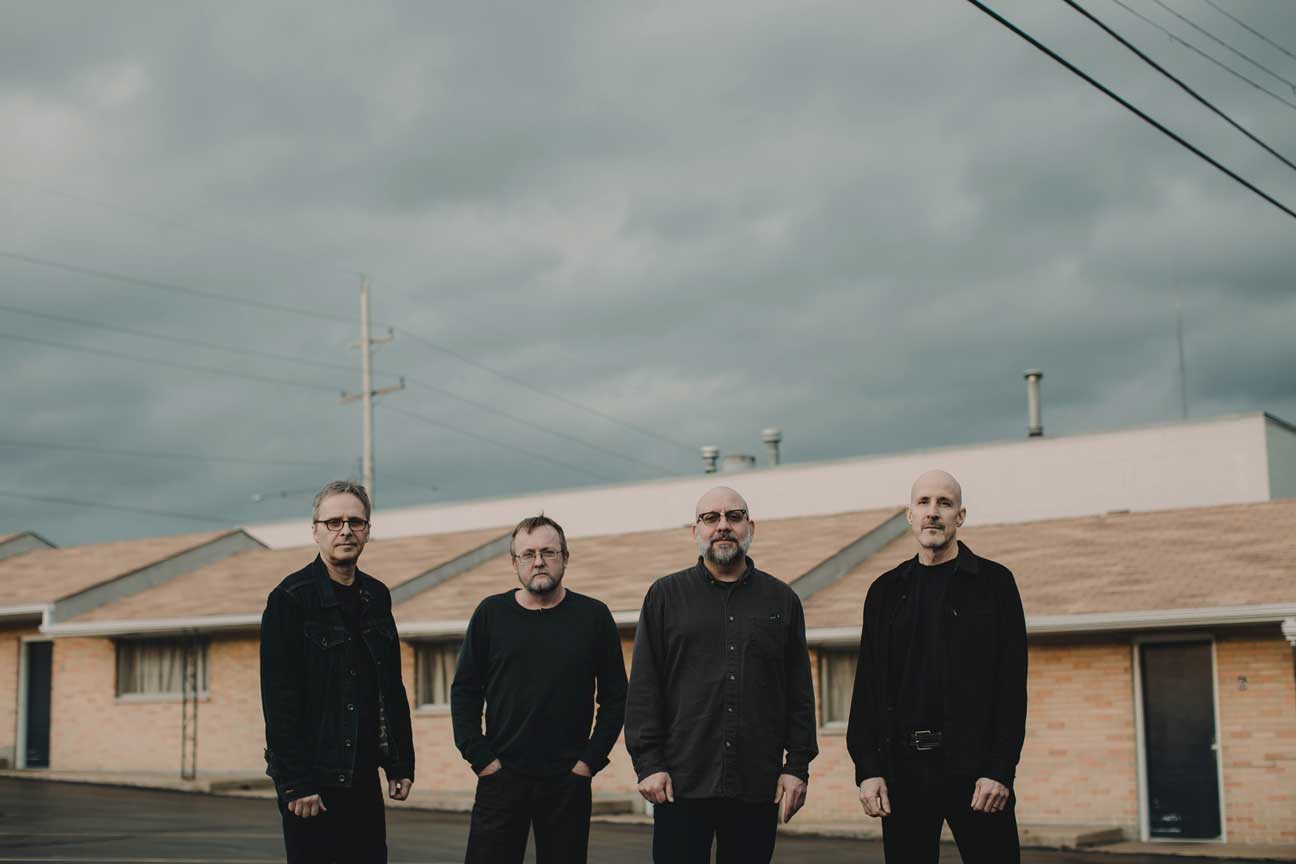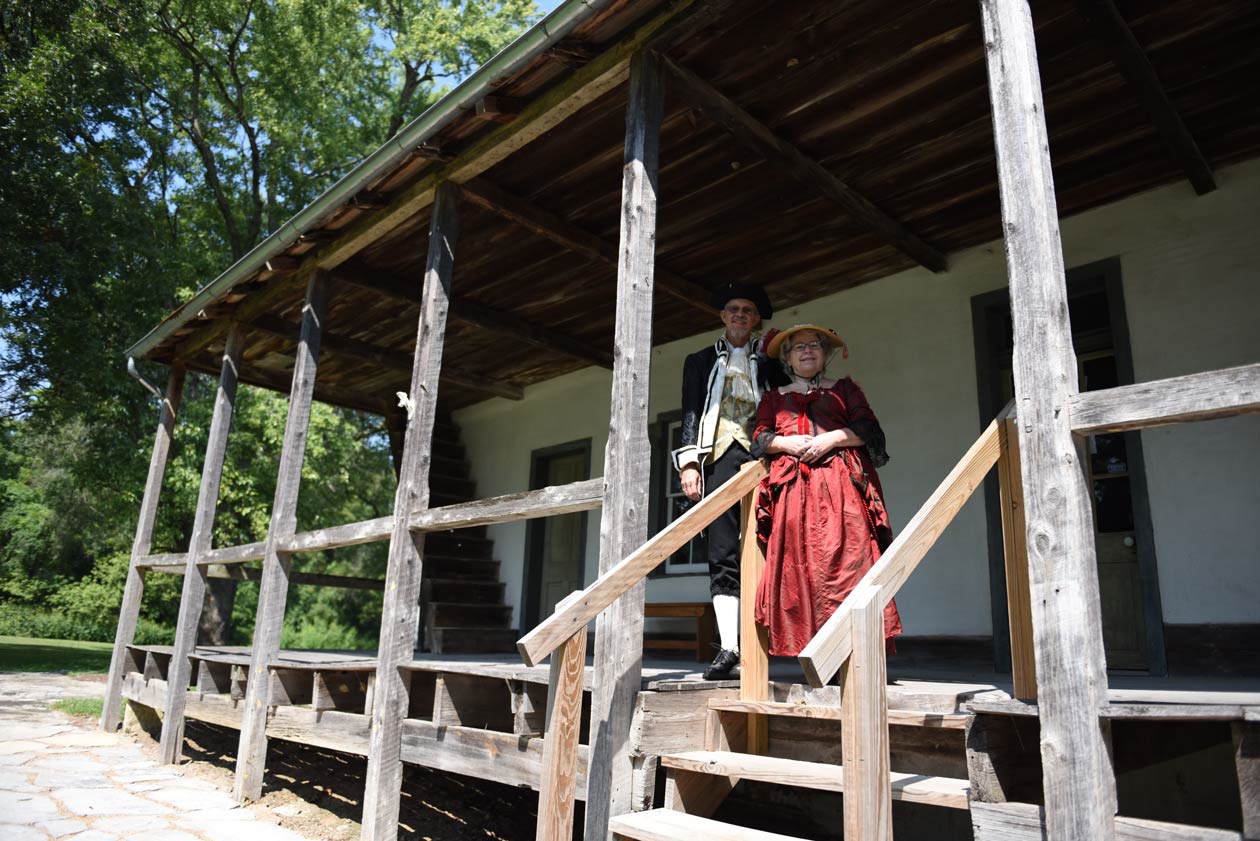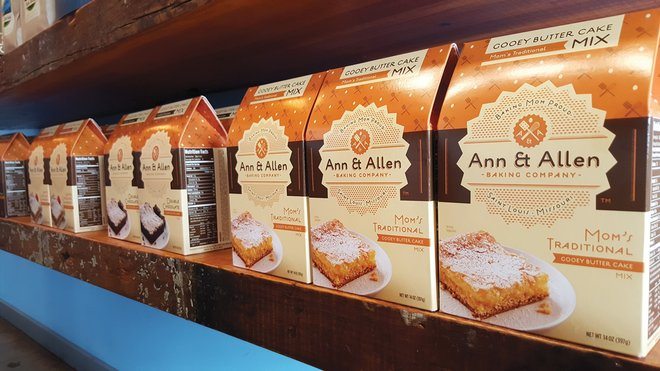Since its completion in 1965, the Gateway Arch has become a symbol, not only of St. Louis, but of America, an icon known throughout the world. Its catenary design rises 630 feet above the Mississippi riverfront, dominating entry to the city from the east. This is what visitors have seen above the ground for more than 50 years.
Now, a re-creation has breathed new life into the half-century-old complex that surrounds the Arch.
The Jefferson National Expansion Memorial has been renamed Gateway Arch National Park, opening a new chapter for the stainless steel monument and for the city. In a wink at the National Mall in Washington, DC, St. Louis is getting its own mall with a newly opened pedestrian green space that extends from the Arch to the Old Courthouse, a connection between downtown and the national park. Bringing the two together has created a new experience for those visiting St. Louis. The Arch is now a quick walk from the courthouse where Dred and Harriet Scott sued for their freedom from slavery more than a decade before the Civil War.
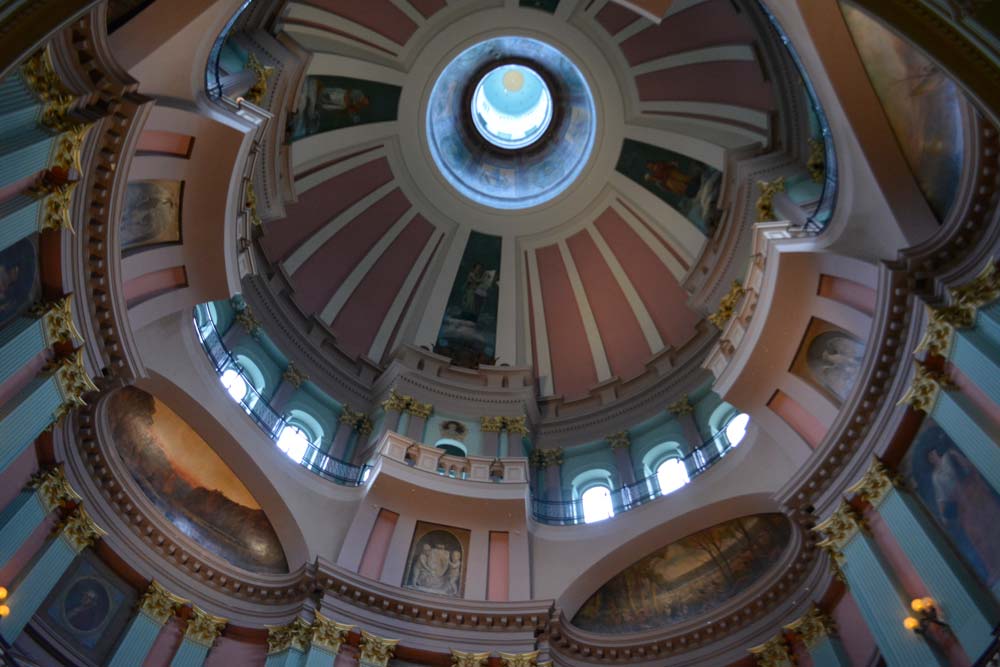
The Old St. Louis Courthouse
One of the city’s most prominent structures, the Old St. Louis Courthouse was the tallest building downtown when it was completed in 1894 after 30 years of remodeling and expansion on the site of the former courthouse. Now, it is an integral part of Gateway Arch National Park, serving as the visitor center for the park. Not only does the courthouse provide a grand entrance into the Arch complex, but it introduces pivotal historical moments.
The Dred Scott case and Virginia Minor’s suit to establish women’s right to vote in the 1870s were heard at the courthouse—milestones in America’s history of groundbreaking spirit and perseverance. Student groups visit the courthouse on a daily basis and sometimes have the opportunity to reenact one of these cases in a 19th-century courtroom.
For visitors, the journey begins here. This is where to purchase tickets and take a tour of the restored courthouse before crossing Fourth Street and continuing to the Arch.
The Walk
Overlooking the city is the Gateway Arch, 630 feet wide and 630 feet high, the tallest monument in the Western Hemisphere. The landmark was designed by Eero Saarinen in the 1940s.
Until recently, getting to the Arch from downtown was difficult for pedestrians. Construction of a land bridge over Interstate 44 now allows easy access between the Arch and downtown St. Louis.
Eric Moraczewski, executive director of the Gateway Arch Park Foundation, likens the impact of the new link to what would happen if the Statue of Liberty were connected to New York City with a land bridge. The Arch, Eric says, was virtually an island, cut o from the city by the interstate, before the new connection was constructed.
“Imagine how much more frequently New Yorkers would go to the Statue of Liberty if they could walk there,” he says.
Visitors may not realize they are walking over a major interstate because landscaping creates an inviting atmosphere. Arch officials describe the design as similar to the National Mall in Washington, DC, with its alignment of the Capitol and the Washington Monument. Now in St. Louis, visitors can stroll straight from the Courthouse to the Arch.
Bicycle and walking trails have been added, along with more landscaping along the route and around the Arch complex, all the way to Eads Bridge.
While this parklike atmosphere envelops the grounds with trees and grass, construction below the Arch is wrapping up on what will be a 43,000-square-foot addition to the original underground museum.

The Entry
For 30 years, the original Museum of Westward Expansion has been a static display of American pioneering and exploration. That all changed in 2015, Eric says, when the museum closed for remodeling and new construction. When the museum reopens on July 3, visitors will be treated to a new interactive experience reaching back 200 years before the Arch’s construction.
An addition to the west side includes a new entry point to the underground museum just east of the courthouse. This entrance is neither large nor intrusive but is a place that brings a sense of purpose to the overall design and blends into its surroundings.
Going beyond compliance with the Americans with Disabilities Act, Arch officials have made sure that everyone can navigate the museum with ease. There are no steps.
Before delving into the museum, visitors will see and walk on one of the largest terrazzo floor maps of North America, detailing historic trails. New visual displays have been installed.
Rhonda Schier, chief of museum services and interpretation at the park, wants visitors to imagine themselves migrating as they walk through the displays toward the museum.
“The object of your mission is to explore the Missouri river, and such principal stream of it, as, by its course and communication with the waters of the Pacific ocean, may oer the most direct and practicable water communication across this continent, for the purposes of commerce.” —Thomas Jeff erson, 1803, wrote this charge to Meriwether Lewis before he and William Clark embarked on their Corps of Discovery expedition, leaving from St. Louis, which then became the Gateway to the West.
“The concept is to head west into the great American expansion as visitors encounter full-motion video immersed in the story of westward expansion,” she says.
This imagining helps prepare visitors for the galleries in the museum, she adds. “The six galleries represent 200 years of American history, which has been expanded by 100 years from the previous museum.”
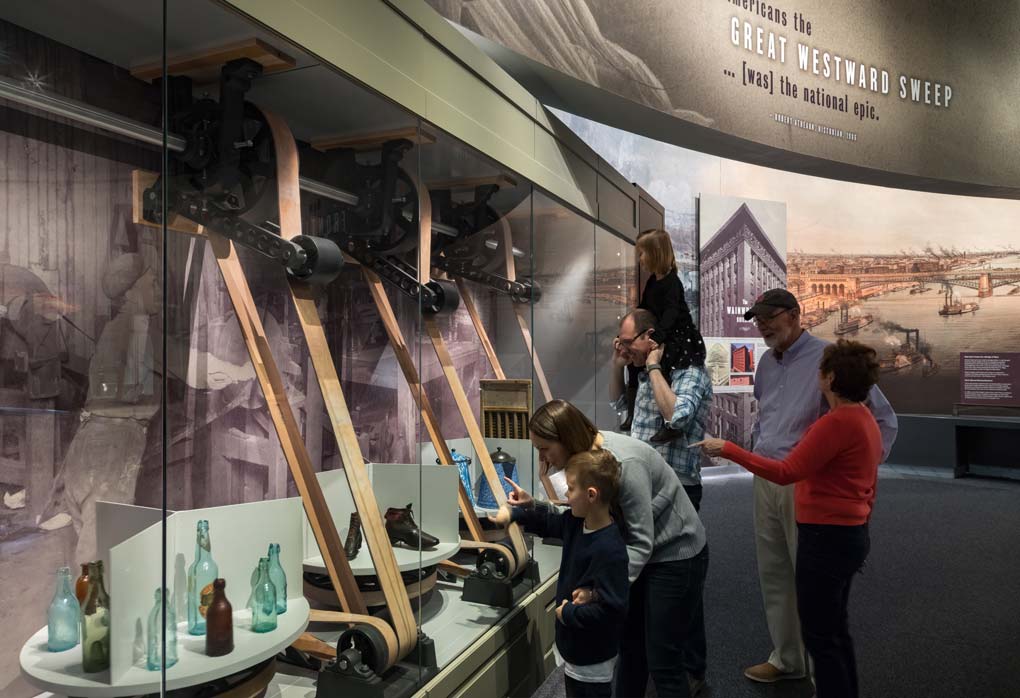
The Museum
Never-before-seen artifacts and exhibits detail the history of US western expansion. Construction workers and archivists are busy preparing and finishing what will be a state-of-the-art museum and learning center, which includes a classroom that can be used for groups as well as provide an individual experience.
The renovation project, which started in 2015, reflects a new vision. While visitors may remember a few exhibits, such as the bronze statue of Thomas Jefferson, third president of the United States and visionary of westward expansion, they will also see displays relaying a story that goes much more in depth.
Since its founding as a French settlement in 1764, St. Louis has been characterized as a gateway to possibilities. An important trading post, the city prospered as a point where the East met the frontier. The city’s status solidified when Jefferson completed the largest acquisition of land by the United States and St. Louis became the headquarters for the Corps of Discovery. As the country grew, so did St. Louis—as a center of commerce, trade, and transportation.
The Arch, erected 200 years after the city’s founding, is a lasting reminder that St. Louis continues to be a gateway. Telling the stories of more than two centuries of that history was no easy task for the reworked museum, but it gave rise to opportunities that had not existed previously. “These six galleries are laid out so that visitors do not have to do them in any particular order,” says park historian Bob Moore.
Among the exhibits is a depiction of a Creole home, a typical house that was present in colonial St. Louis. This vertical-log construction was common from St. Louis to New Orleans. Only a handful of these homes still exist from this period, including a few in Ste. Genevieve. A full-scale, historically accurate 15-by-15-foot house is on display to show what homes in St. Louis would have looked like more than 250 years ago. Visitors may walk through the house and learn more from interactive displays. Additional exhibits explore the historic relationship St. Louisans had with their neighbors, the Osage Indians.
Jefferson’s vision of the West appears as a grid pattern overlapping a photograph of the majestic Rocky Mountains. Je fferson mapped the West in a similar grid pattern, Bob notes. The Jeff erson statue faces west, taking in this panoramic view.
As St. Louis became the gateway to the West, the small colonial city became a bustling metropolis with steamboats, trains, and a growing population. Exhibits allow visitors to interact and see artifacts from this period.
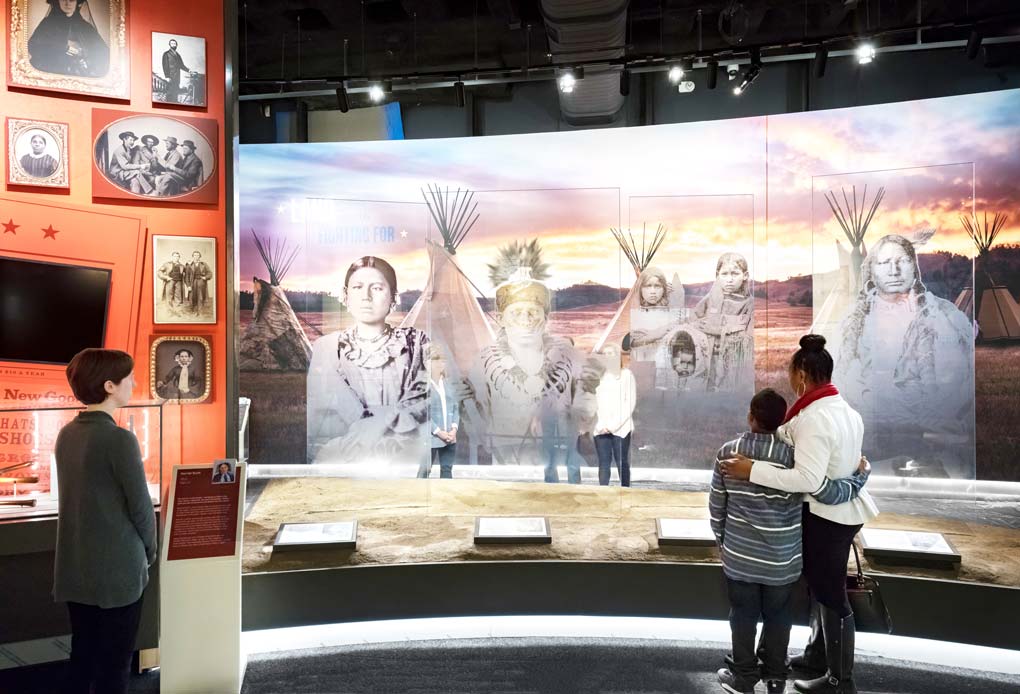
Many artifacts now on display have been in storage for decades. In fact, when the Arch was under construction, workers discovered a trove of glassware and ceramics in a covered cistern. Dating to the beginning of the 19th century, many of the artifacts had come from Europe.
A five-block, historically accurate St. Louis riverfront of the 1850s has been re-created to scale and includes characters dotting the scene. Ocials say the characters are based on actual people who lived during that time.
It took foresight to preserve some of the riverfront cityscape as the Arch was constructed. Workers took one famous building’s materials to a warehouse so that it could one day be reconstructed. In 2018, the reconstructed walls of the Rock House stand in the museum under the Arch. Much like the Creole House, this full-scale experience gives visitors a real sense of what the riverfront was like before the landscape changed.
“Audio-visuals will give a fuller background of the different time periods of the building’s story,” Bob says, “all the way from when it was a fur-trade warehouse to its later life as a nightclub in the 1930s.”
The museum has added historical and contemporary perspectives on westward expansion from Mexicans and American Indians, Eric says. A gallery is devoted to their stories, in audio and visual format.
The goal is for visitors to have an experience that allows them not only to see, but to interact with, the museum.
Up to the Top
Millions of visitors come to see the nation’s tallest monument each year, and that number has recently begun to climb again after hitting a plateau more than a decade ago. They travel up either leg of the structure in a small tram car for a view that puts the entire project in perspective. Looking west out the small windows at the top, visitors will see the next chapter in the life of the Arch.
The museum, Arch, and grounds have been transformed to provide a visitor experience that includes all of St. Louis. The Arch is no longer an island, but a part of the city that was strategic in America’s story.
Jefferson’s vision of the nation’s journey is on view outside those windows. It began in St. Louis, and when visitors look west, they may see an endless expanse of possibilities and dreams among the real stories of the past 250 years.
About the Arch
The entire Gateway Arch National Park complex—including the Old Courthouse, Luther Ely Smith Square, and several surrounding streets—is 91 acres.
Eero Saarinen’s memorial vision was chosen during a 1947-48 architectural competition.
“All 172 entrants in the monument competition had to create a landscape design as well as ‘a large, central feature,’ and most retained landscape architects on their design teams to ensure that they created a holistic space within … the site,” according to the National Park Service.
 Project Particulars
Project Particulars
The $380 million CityArchRiver project is a partnership of the Gateway Arch Park Foundation, Great Rivers Greenway, the National Park Service, Bi-State Development, the City of St. Louis, and the Jefferson National Parks Association.
The Visitor Center expansion design team includes Cooper Robertson, architect, with James Carpenter Design Associates and Trivers Associates.
The museum exhibits were designed by Haley Sharpe Design.
The lead contractor for the Visitor Center expansion is McCarthy Building Companies Inc.
Museum exhibit fabrication is by Pacific Studio and Kozeny-Wagner.
Photos by Edward Lang, Barbara Gibbs Ostmann, and Courtesy Gateway Arch Park Foundation
Related Posts
St. Louis Rock Band Finn’s Motel Returns With Two New Records
“By the time I got done mixing and mastering everything that we started, it got done in 2017, so we put two albums out in the same year,” Joe says. “The reason these records got divided the way they did is that there were a handful of themes that seemed like they belonged over on this side and a handful that belonged on that side.”
Ste. Genevieve to Become a National Historic Park
Ste. Genevieve was established in 1735 by French-Canadian colonists. It was the first ever settlement by Europeans in Missouri.
Here Are Our Favorite Places to Get Gooey Butter Cake in and Around St. Louis
Legends abound about the true origins of gooey butter cake, with one common denominator—like toasted ravioli, it is purported to be a mistake of glorious proportions.

